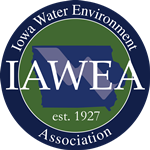Here is your source for the most up-to-date information on biosolids. From the activities of the IAWEA Biosolids Committee to the latest regulatory and research news, check with the IAWEA Web Page. You might even want to bookmark this page so you can check back frequently.
IAWEA Biosolids Awards Program
The Biosolids Award recognizes those treatment plants that have made significant strides in their Biosolids program by the development and implementation of cost-effective, environmentally safe and publicly acceptable Biosolids practices. The IAWEA Biosolids Committee will be accepting applications for the IAWEA Biosolids Awards program until November 15 for the current year award.
Committee Chair
Dan Miers
IAWEA Biosolids Committee Meeting Minutes
Click here for the current meeting schedule
30th Annual Biosolids Conference Presentations
31st Annual Biosolids Conference Presentations
More General Biosolids Information
National Study on Residential Impact of Biological Aerosols from Land Application of Biosolids Finds Low Microbial Risks of Infection (Posted August 1, 2005)
A national study was conducted by the University of Arizona (Tucson) on the residential impact of biological aerosols from the land application of biosolids. The purpose of this study was to evaluate the community risk of infection from bioaerosols to residents living near biosolids land application sites. The study results led to the conclusion that overall bioaerosol exposure from biosolids operations poses little community risk. The study evaluated the overall incidence of aerosolized microorganisms from the land application of biosolids and subsequently determined that microbial risks of infection were low for residents close to biosolids application sites. The study results were published in the Journal of Applied Microbiology, 2005, 99, 310-322.
Biosolids Land Application Field Guide
Biosolids Applied To Land: Advancing Standards and Practices (Posted July 3, 2002)
Academies’ National Research Council (NRC) on the completion of its 18-month study, Biosolids Applied to Land: Advancing Standards and Practices and supports its conclusion that there is no documented scientific evidence that EPA’s 1993 Part 503 rule has failed to protect public health.

